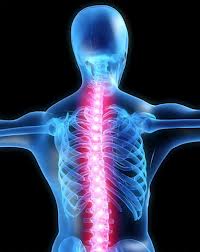What is a Subluxation, and How Can It Cause Arthritis?
 When a vertebrae becomes misaligned or moves out of its normal position, this is referred to in the chiropractic profession as a subluxation. Subluxations can be caused by a wide range of issues ranging from a minor slip or bump to a car accident or any sudden trauma. When a vertebrae is subluxated, it begins to put pressure on nerves, blood vessels and everything around it. This pressure comes with a price. The subluxation interrupts the natural pathways that the messages sent from the brain need to be clear in order to be completed properly.
When a vertebrae becomes misaligned or moves out of its normal position, this is referred to in the chiropractic profession as a subluxation. Subluxations can be caused by a wide range of issues ranging from a minor slip or bump to a car accident or any sudden trauma. When a vertebrae is subluxated, it begins to put pressure on nerves, blood vessels and everything around it. This pressure comes with a price. The subluxation interrupts the natural pathways that the messages sent from the brain need to be clear in order to be completed properly.
As time goes by and a subluxation remains untreated, the spine and surrounding features such as discs can begin to degenerate. This degeneration becomes more difficult to reverse as time goes by as the surrounding muscles, nerves and bones begin to adjust to the new shape. The body is an amazing machine. It will start to accommodate these changes by compensating in other areas. The longer this goes on, the more difficult it is and the longer it takes to get back to near perfect position.
Degeneration Phase 1
The first stage of spinal degeneration is when there is a minor loss of normal spine balance and spinal curvature. The surrounding features of the spine such as nerves, discs and joints begin to age quicker and are continually more stressed. This stage of the degeneration process rarely is accompanied with any major pain. At this point, there is a good chance that with the proper care, you can return to normal.
Degeneration Phase 2
In the second stage of spinal degeneration, there is a often narrowing of the discs and potentially deformation in the bones. Your posture is often beginning to degenerate as well at this point. As the spinal canal, or opening begins to narrow, there are often significant aches and pains associated. Fatigue and stress are more common at this stage. There is a good chance of improvement at this stage with the proper care.
Degeneration Phase 3
In the third stage of spinal degeneration, there is significant physical and mental involvement due to the level of issues here. There is most likely nerve damage as well as deformation of the bones and discs. There would a significant loss of energy and height at this point. Some reversal is possible.
Degeneration Phase 4
In the fourth stage of spinal degeneration, most damage is permanent including scar tissue, nerve damage and deformation. At this point, the condition is irreversible. Management of pain and discomfort is the best option here.
